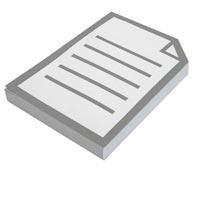
How to Properly Publish a Post
Publishing a quality piece of content is like preparing a good meal - it requires careful attention at each step. You must plan, prepare, execute, and serve with an eye toward the final meal. You don't want to serve junk food on fine china, nor do you want to serve your best cuisine on paper plates! Writing for Chess.com is the same - we try to make our content as palatable as possible, both in terms of content and presentation. We've put together this little guide to help you think through the steps. Enjoy!
Concept
When you think about your post, think about your audience. Who are they? And most importantly, what do you want to them to get out of reading your piece? Do you want them to learn one new chess concept? Or do you want to entertain? Or, ideally, do you want to do both? Think carefully about your audience and message and try to craft something that will inspire readers, leaving them grateful they read what you wrote. Stay on topic, and stay relevant to what the reader is expecting. Make sure your post flows. Here is a tried-and-true format: start with an engaging hook (story, anecdote, quote), then tell the audience what you are going to tell them, then give support materials and details around the topic, then conclude with a recap, and then a memorable closer. (The old "tell them what you're going to tell them, then tell them, then tell them what you told them"!) It works every time.
Writing
When writing use proper grammar and style. Professional writing is fine. Conversational writing is fun. But slang writing is bad - "Dudes, i botched this opening and got pwned - LOL!". Ugh. You can use a third-person voice, or interject your personality with first-person narrative. Either way, use clear, concise, classy language.
Editing
Spellcheck. Spellcheck again. Then re-read your own work to make sure it flows. Try reading it aloud - that is usually the best test. Maybe have someone else read and comment. Then spellcheck again.
Online "Readability"
Per guidelines directly from "Yahoo's Style Guide" as well as the best practices you can see used by all popular news sites, here are some simple "rules to follow" when writing an article meant for online consumption:
- Short, grabbing, to the point headlines (also see "Formatting" below);
- Short paragraphs. Paragraphs should be 6-7 "lines of text" for maximum readability. Even short paragraphs of 3-4 lines are good! No one likes to be up against a "word wall";
- No more than 6 paragraphs (ideally 3-4 if they are longer paragraphs) without a *break* of some kind. This means the insertion of a picture, an embedded video, a quote, etc - something to give the readers a "visual image" to look at tends to increase interest levels and keep readers reading;
- Don't be afraid to hyperlink to premium Chess.com Features! Hyperlinking words like "tactic" or "puzzle" to Tactics Trainer. Hyperlinking names of great champions to other articles and videos on about them, etc;
- Use Bullet Points and Lists when possible (easier to read);
- Separate "quotes" from the "main" paragraphs;
All these great tips will keep the interest levels of your content high and help readers stay with your articles.
Formatting
Make sure you use a good font and layout. The Chess.com text editor has a good layout. If you write in Word or some other program, pasting the text from word will likely get ugly. Try pasting into Notepad (or Wordpad) first to clear the ugly formatting attached to Word text, then paste from there into the Chess.com editor.
Here are some other formatting recommendations for Chess.com content:
- Use a good title to draw interest (ex. "How to Punish People with Prepared Openings" vs. "Good Openings")
- Use "Title Case" for your titles - capitalize the first letter of each main word (ex. "This Great Article Title" vs. "This great article title")
- Try to add a picture - it helps break up the text and adds character.
Publishing
Preview your work before publishing. Make sure you are pleased with the message, language, and formatting of the article. If you get stuck, ask a friend (or Chess.com staff member) for some contructive feedback.
Thanks for taking the time to read this. We can all improve our posts by following these easy steps.
Feel free to check out our official Style and Usage Guide Google Doc, shared with all Chess.com's hired contributors. Written and approved by our own Co-Directors of Content, Peter Doggers and Mike Klein. Click here.
Thank you!
Erik
Chess.com (and yes, I am qualified to write this - I have a BA in English!)




